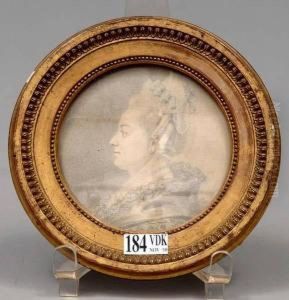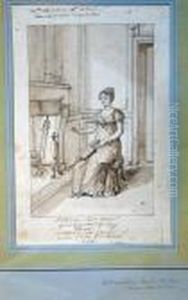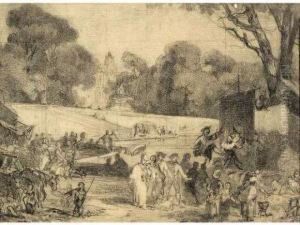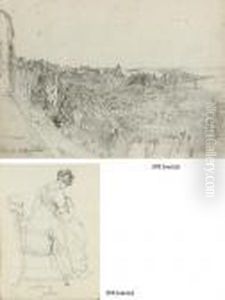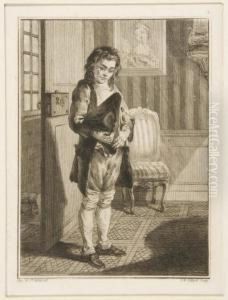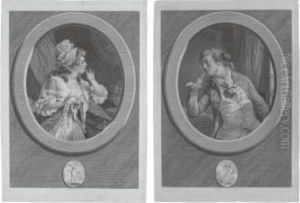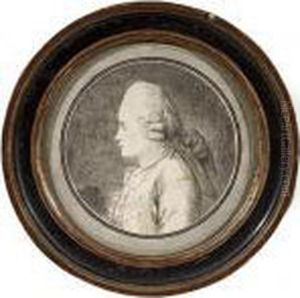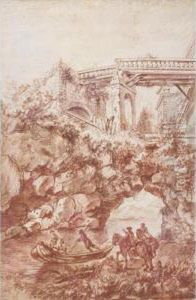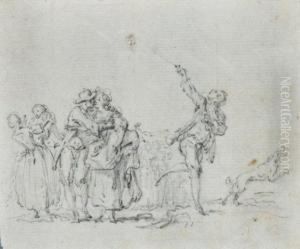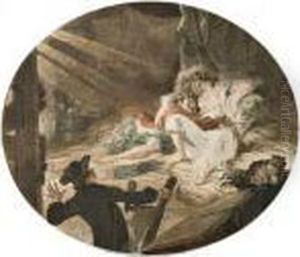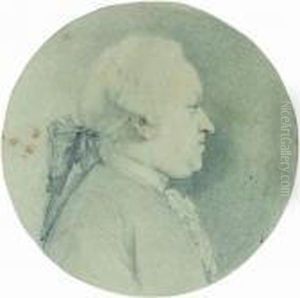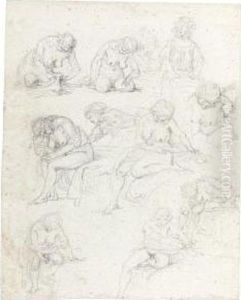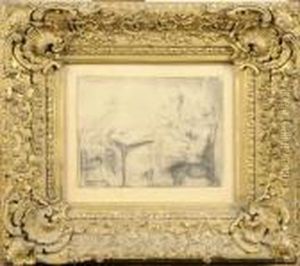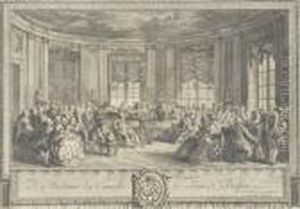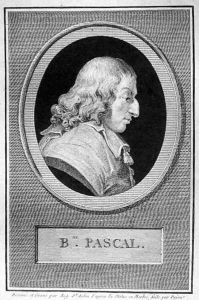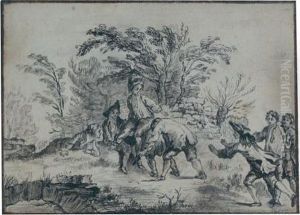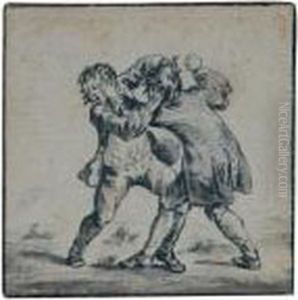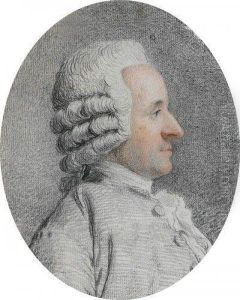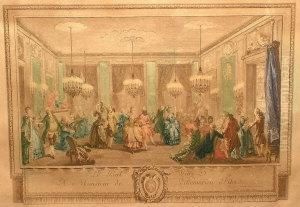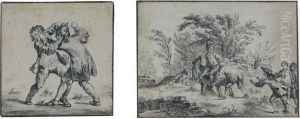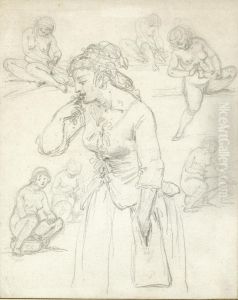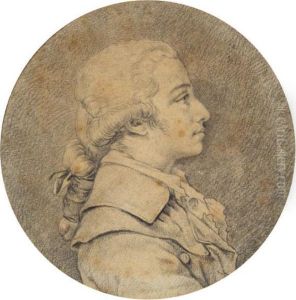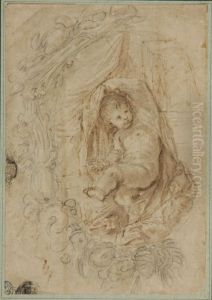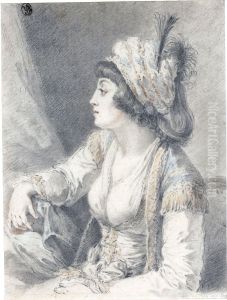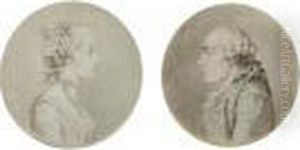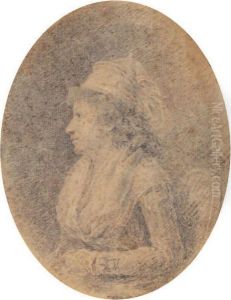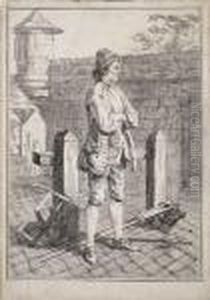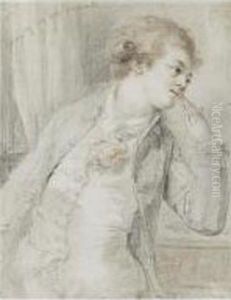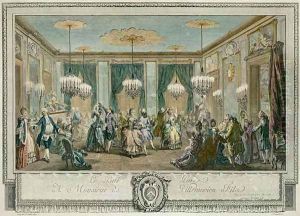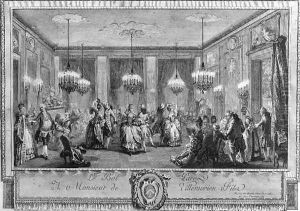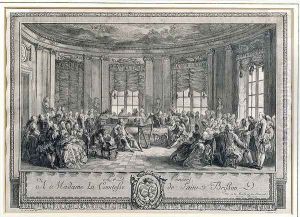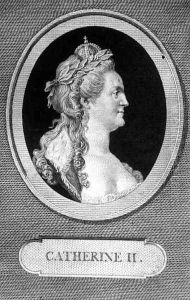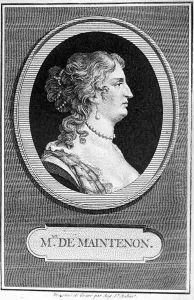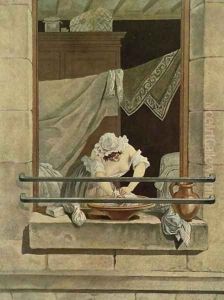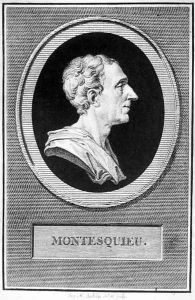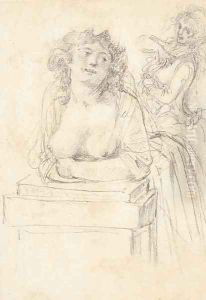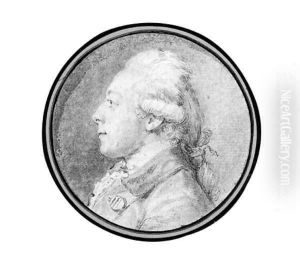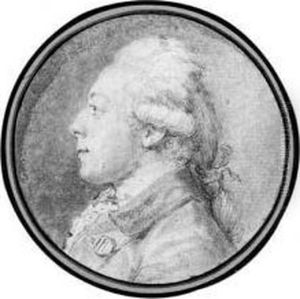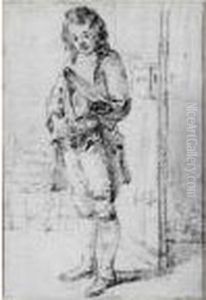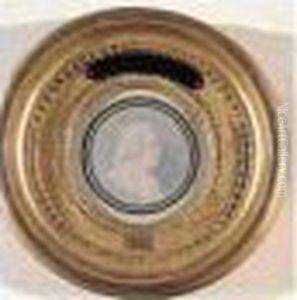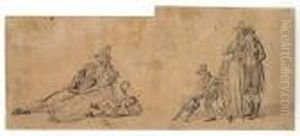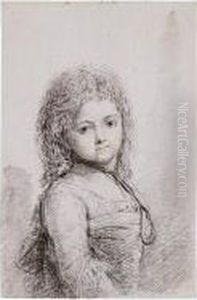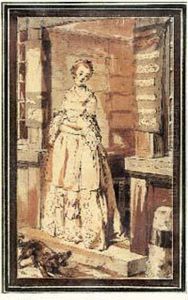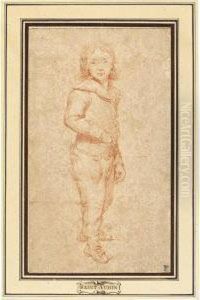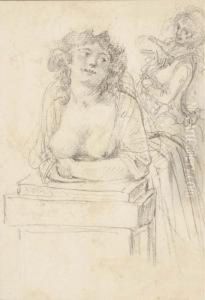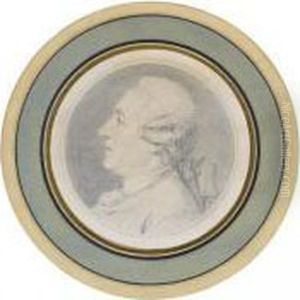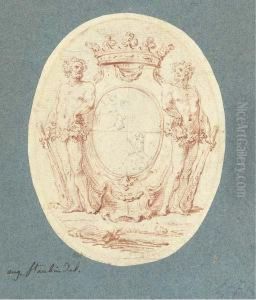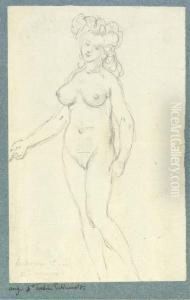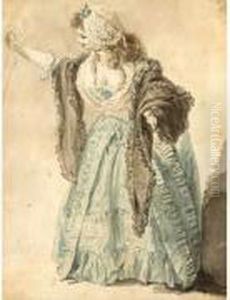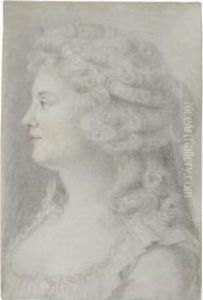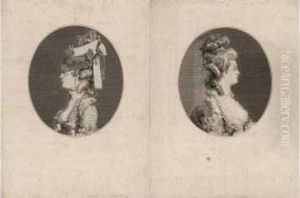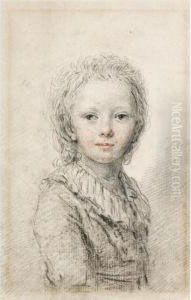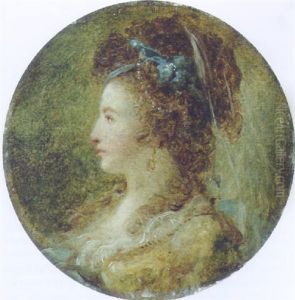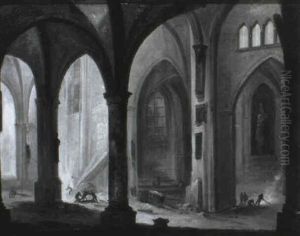Augustin de Saint-Aubin Paintings
Augustin de Saint-Aubin was a French engraver born on January 17, 1736, in Paris, France. He was the third son of Gabriel de Saint-Aubin, a distinguished artist, and Anne Elisabeth Claire Leguay. Coming from a family with strong artistic inclinations, Augustin was trained by his older brother, Charles-Germain de Saint-Aubin, who was an accomplished draftsman and designer.
Augustin's career was marked by his adeptness in a variety of engraving techniques, including etching, which allowed him to produce works with remarkable finesse and detail. He became known for his engravings of contemporary French life, illustrations of literature, and reproductions of famous artworks. His style captured the elegance and wit of the French Rococo movement, which was characterized by lightness, grace, and an emphasis on decorative arts.
Saint-Aubin's talent was recognized early on when he was awarded the prestigious Prix de Rome in 1752 for engraving, which allowed him to study at the French Academy in Rome. However, due to family obligations, he did not take up the opportunity to study in Rome. Instead, he remained in Paris, where he became an important figure in the city's artistic community.
Throughout his career, Augustin de Saint-Aubin exhibited at the Paris Salon, the official art exhibition of the Académie des Beaux-Arts in Paris. His works were highly sought after by the Parisian elite and were often commissioned by publishers for illustrations in books and periodicals.
Despite his success, Saint-Aubin faced financial difficulties later in life, largely due to the French Revolution, which disrupted the patronage system that had supported artists. Nevertheless, he continued to produce engravings until his death on November 9, 1807, in Paris. Today, his engravings are considered important records of French culture and art during the 18th century and are held in high esteem by collectors and historians alike.
